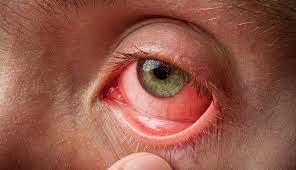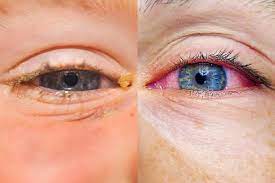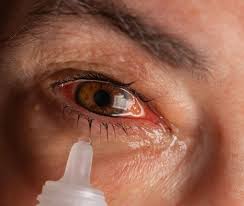
Pink Eye Causes, Symptoms, and Effective Treatment Options
Pink eye, also known as conjunctivitis, is a prevalent eye condition affecting people globally. In this comprehensive guide, we’ll delve into the causes, symptoms, and treatment options for pink eye, providing essential insights to help you understand and manage this common ocular issue effectively.

Pink eye is characterized by inflammation of the conjunctiva, the thin, transparent membrane covering the white part of the eye and the inner surface of the eyelids. This condition can be caused by various factors and can lead to discomfort, redness, and in some cases, vision problems. It is characterized by redness, itching, and swelling of the conjunctiva, the thin membrane that covers the white part of the eye. Pink eye can be caused by various factors, including bacterial or viral infections, allergies, or irritants. Understanding the causes, symptoms, and treatment options for pink eye is essential in order to effectively manage and prevent its spread.
Types of Pink Eye:
-
Viral Conjunctivitis: This is the most common type of pink eye and is highly contagious and can spread through respiratory droplets or direct contact with infected individuals. It is caused by a virus, such as the adenovirus or herpes simplex virus, and typically accompanies cold or flu symptoms. Viral conjunctivitis often accompanies other viral infections like the common cold or flu. Symptoms of viral conjunctivitis include redness, watery discharge, itching, and sensitivity to light.
-
Bacterial Conjunctivitis: Bacterial conjunctivitis is one of the most common forms of pink eye. It is caused by bacterial infections such as Staphylococcus aureus or Streptococcus pneumoniae. This type of pink eye can result in thick, yellow or greenish discharge from the eye. It is also highly contagious and can easily be spread through direct contact with infected individuals or contaminated objects. Symptoms of bacterial conjunctivitis include redness, excessive tearing, discharge that may be yellow or green in color, and crusting of the eyelids.
-
Allergic Conjunctivitis: This type of conjunctivitis is not contagious and is often associated with other allergic conditions like hay fever, asthma or allergies to substances like pollen, pet dander, or dust mites. It affects both eyes and is often associated with itchiness and watery discharge. Allergic conjunctivitis occurs when the eyes come into contact with allergens such as pollen, pet dander, or dust mites. Symptoms of allergic conjunctivitis include redness, itching, tearing, and swollen eyelids.
-
Chemical Conjunctivitis: It can affect one or both eyes and requires immediate attention. This type of conjunctivitis occurs when the eyes come into contact with irritants such as chlorine in swimming pools, smoke, chemicals, or foreign objects. Unlike other forms of pink eye, irritant conjunctivitis is not caused by an infection or an allergic reaction. Symptoms of irritant conjunctivitis include redness, burning sensation, excessive tearing, and blurred vision.
Common Symptoms: The symptoms of pink eye can vary depending on the cause, but some of the typical signs include:
- Redness in the white part of the eye and inner eyelids.
- Itchiness or a gritty sensation in the eyes.
- Watery or thick discharge from the eyes.
- Swelling and puffiness around the eyes.
- Sensitivity to light.
- Crusty eyelids, especially upon waking up.
Treatment Options: The treatment for pink eye depends on its underlying cause. Here are some general guidelines:

- Viral Conjunctivitis: Unlike bacterial conjunctivitis, viral conjunctivitis does not respond to antibiotics. The infection usually resolves on its own within one to three weeks. Applying warm compresses and using over-the-counter lubricating eye drops can help alleviate discomfort and reduce symptoms. It is important to practice good hygiene, such as frequent handwashing, to prevent the spread of viral conjunctivitis.
- Bacterial Conjunctivitis: Antibiotic eye drops or ointments prescribed by a healthcare professional can help clear up the infection. To treat bacterial conjunctivitis, doctors often prescribe antibiotic eye drops or ointments. These medications help eliminate the bacteria causing the infection and reduce symptoms within a few days. It is crucial to complete the full course of antibiotics as prescribed, even if symptoms improve, to prevent recurrence or the development of antibiotic-resistant strains.
- Allergic Conjunctivitis: To manage allergic conjunctivitis, it is crucial to identify and avoid the allergen triggering the symptoms. Over-the-counter antihistamine eye drops, or oral medications can help alleviate symptoms by reducing the body’s allergic response. Cold compresses can also provide temporary relief from itching and swelling. If symptoms persist or worsen, it is advisable to consult a healthcare professional for further evaluation and treatment options.
- Chemical or Irritant Conjunctivitis: The best way to manage irritant conjunctivitis is to remove or avoid the irritant causing the symptoms. Immediately rinse the eyes with clean water for at least 15 minutes to flush out any remaining irritants. Seek medical attention promptly to assess the extent of damage and receive appropriate treatment. Applying cold compresses and using lubricating eye drops can help soothe the eyes and alleviate discomfort. If symptoms persist or worsen, it is important to seek medical attention to rule out any underlying conditions or complications.
Preventing Pink Eye: To reduce the risk of contracting or spreading pink eye, follow these preventive measures:

- Wash your hands frequently, especially after touching your eyes or face.
- Avoid sharing personal items such as towels, pillowcases, or eye makeup.
- Never touch your eyes with unwashed hands.
- If you wear contact lenses, follow proper hygiene and care instructions.
Pink eye, or conjunctivitis, is a common eye condition that can be caused by bacterial or viral infections, allergies, or irritants, each requiring specific treatment. Understanding the different types of pink eye and their respective symptoms is crucial in order to seek appropriate treatment and prevent its spread. Whether it is bacterial, viral, allergic, or irritant conjunctivitis, prompt management and good hygiene practices are essential for a speedy recovery and to minimize the risk of transmission. By taking preventative measures, you can reduce the risk of pink eye and maintain optimal eye health. If you experience persistent or severe symptoms, it is advisable to consult a healthcare professional for proper diagnosis and treatment.
Disclaimer: The information provided in this content is for general informational purposes only. It is not intended as medical or healthcare advice, diagnosis, or treatment. Always seek the advice of a qualified healthcare professional with any questions you may have regarding a medical condition or healthcare decisions.
















